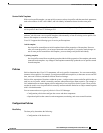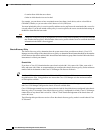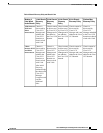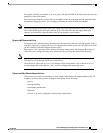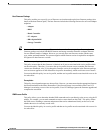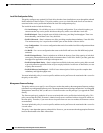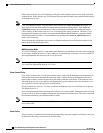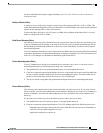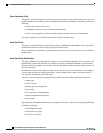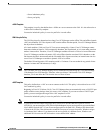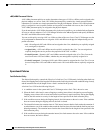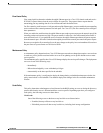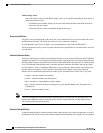
Management Interfaces Monitoring Policy
This policy defines how the mgmt0 Ethernet interface on the fabric interconnect should be monitored. If Cisco
UCS detects a management interface failure, a failure report is generated. If the configured number of failure
reports is reached, the system assumes that the management interface is unavailable and generates a fault. By
default, the management interfaces monitoring policy is disabled.
If the affected management interface belongs to a fabric interconnect which is the managing instance, Cisco
UCS confirms that the subordinate fabric interconnect's status is up, that there are no current failure reports
logged against it, and then modifies the managing instance for the end-points.
If the affected fabric interconnect is currently the primary inside of a high availability setup, a failover of the
management plane is triggered. The data plane is not affected by this failover.
You can set the following properties related to monitoring the management interface:
• Type of mechanism used to monitor the management interface.
• Interval at which the management interface's status is monitored.
• Maximum number of monitoring attempts that can fail before the system assumes that the management
is unavailable and generates a fault message.
In the event of a management interface failure on a fabric interconnect, the managing instance may not
change if one of the following occurs:
Important
• A path to the end-point through the subordinate fabric interconnect does not exist.
• The management interface for the subordinate fabric interconnect has failed.
• The path to the end-point through the subordinate fabric interconnect has failed.
Network Control Policy
This policy configures the network control settings for the Cisco UCS domain, including the following:
• Whether the Cisco Discovery Protocol (CDP) is enabled or disabled
• How the VIF behaves if no uplink port is available in end-host mode
• The action that Cisco UCS Manager takes on the remote Ethernet interface, vEthernet interface , or
vFibreChannel interface when the associated border port fails
• Whether the server can use different MAC addresses when sending packets to the fabric interconnect
• Whether MAC registration occurs on a per-VNIC basis or for all VLANs.
Action on Uplink Fail
By default, the Action on Uplink Fail property in the network control policy is configured with a value of
link-down. For adapters such as the Cisco UCS M81KR Virtual Interface Card, this default behavior directs
Cisco UCS Manager to bring the vEthernet or vFibreChannel interface down if the associated border port
fails. For Cisco UCS systems using a non-VM-FEX capable converged network adapter that supports both
Ethernet and FCoE traffic, such as Cisco UCS CNA M72KR-Q and the Cisco UCS CNA M72KR-E, this
Cisco UCS Manager GUI Configuration Guide, Release 2.0
OL-25712-04 23
Server Architecture and Connectivity



